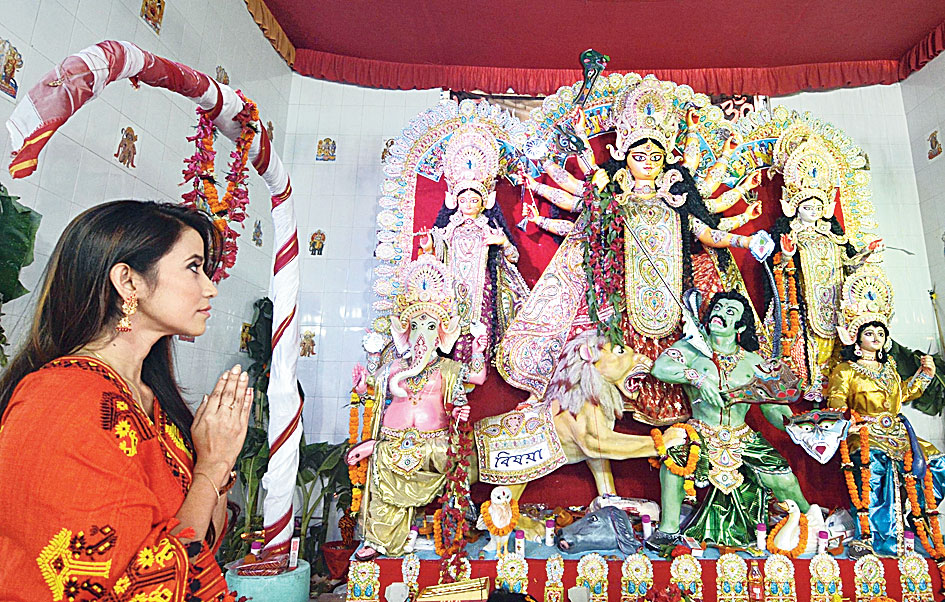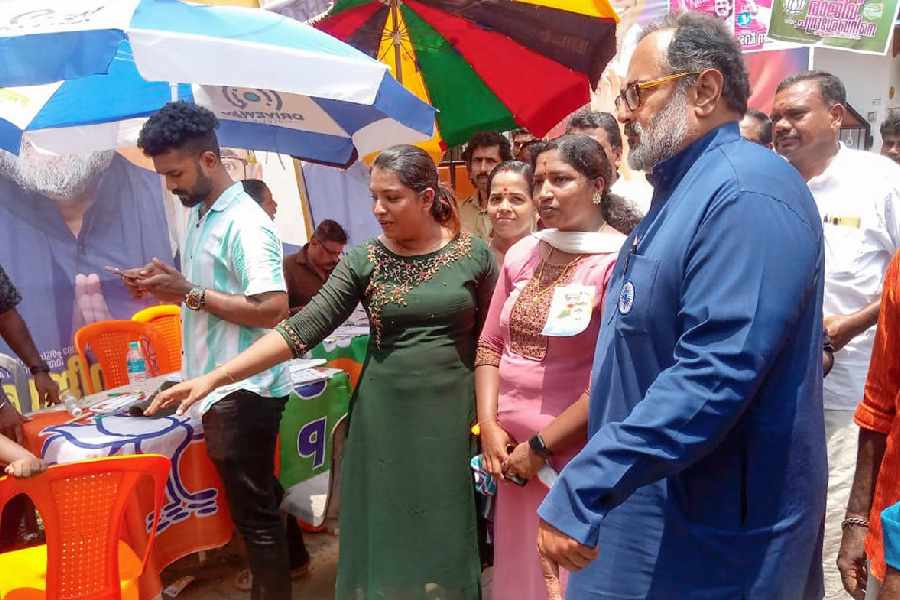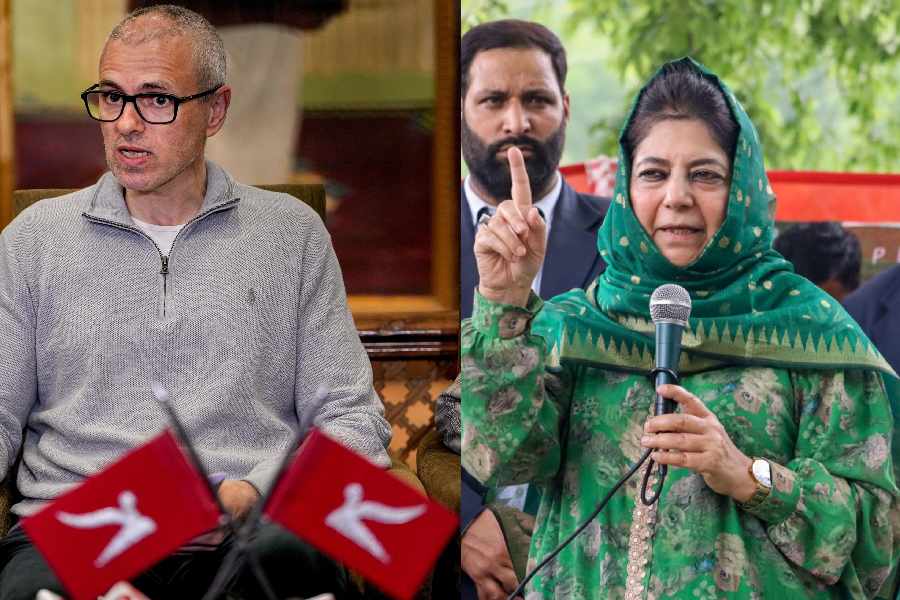The Durga Puja at Bishaya household in Uzan Bazar here, which boasts of names like actress Barsha Rani, has a unique narrative. Almost a century ago, it was born out of defiance against Brahmanical dominance as people from the fishing community were then not allowed at Pujas held by the Brahmins.
Khiroda Kanta Bishaya started Durga Puja in his house to show the Brahmin community that caste serves no purpose when adherence to the goddess is paramount.
Khiroda, who was known as the king of the fish business, was discriminated upon at a puja venue because of his caste. He decided to organise a puja as a befitting reply to the upper caste and send a message that hard work can surpass caste dominance. The puja soon became a pride of his community.
The puja at the Bishaya household, which has made an indelible mark on the Assamese film industry and culture, is also a facet of spirituality.
It is one of the rare venues where Durga and her entourage are adorned with gold ornaments. Artisans are brought from Calcutta to craft the idol in the household. This tradition has continued for almost three generations.
Ashok Bishaya, film director and businessman, said, “This year, the Puja at our household will mark 91 years of existence. We follow the Vedic tradition, without any animal sacrifice. It was my grandfather Barada Kanta Bishaya who started this Puja with ghot (urn) puja but my father Khiroda conceptualised it into pratima (idol) puja. My father wanted to send a message of defiance to society. We use traditional gold ornaments in decorating the goddess and her four children.”
Uzan Bazar is considered to be the oldest locality here. With a potpourri of upper caste communities, Schedule Castes, Muslims and Christians, it has witnessed unfolding of the city’s history over the decades. Some inhabitants here said though caste segregation was not visible in a direct manner, a discriminatory attitude was present.
Allen Brooks, a former member of the Minority Commission, said, “Khiroda was a multi-faceted personality, a revolutionary who stood against caste discrimination. He was once known as the king of the fish business. But faced caste prejudice. The puja in his household is a case of defiance against this prejudice. He was involved in cultural activism too.”
The younger generation of the household also follows the traditions. “We fast during the day during Navratra. We focus on spirituality and chandi path and traditional hyms are chanted. The younger generation does not need to focus on caste. Our puja is a mark of spiritual adherence,” said Barsha Rani.










